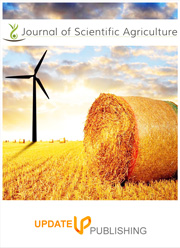Effect of sodium chloride stress on the pigment and biochemical variation of pigeon pea (Cajanus cajan (L.) Millsp.)
DOI:
https://doi.org/10.25081/jsa.2017.v1i0.2Keywords:
Salt stress, Pigments, Protein, Amino acid, Proline and Pigeon peaAbstract
In the present study, a pot culture experiment was conducted to estimate the effect on NaCl stressed Pigeon pea (Cajanus cajan (L.) Millsp.) the plant belongs to family Fabaceae, is a sub tropical crop, grown world wide particularly in south Asia for edible and fodder purposes, while little is known about its salinity tolerance. The seed were sown in plastic pots from 30 days after sowing (DAS), the plants were treated with 25mM, 50mM, 75mM and 100mM sodium chloride on 20th, 30th and 40th DAS. The plants samples were collected from 30th, 40th and 50th DAS. The leaf were collected for estimating pigment and biochemical content. The sodium chloride treatment decreased the chlorophyll-a, b, total chlorophyll and protein content. Similarly the amino acid and proline content were increased with increasing concentration of NaCl to a larger extent when compared to control in all the treatment day.



 .
.